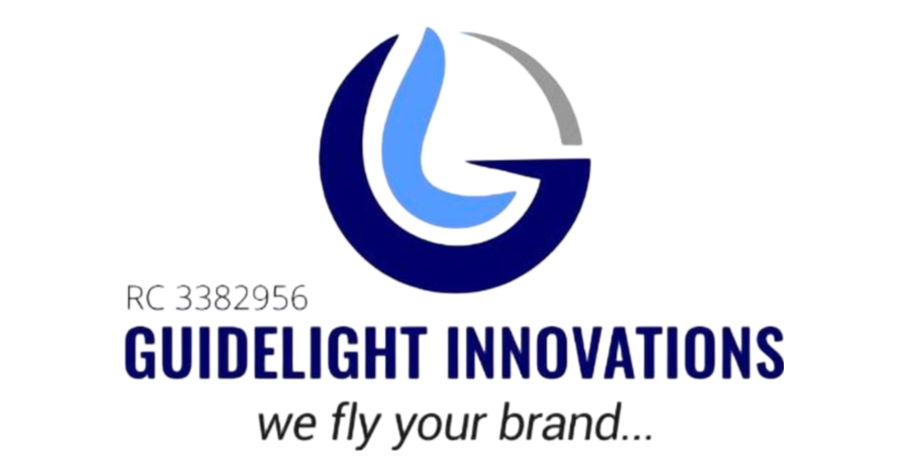For decades, brands have been shouting through megaphones, desperately trying to be heard above the noise. They’ve positioned themselves as the heroes of their own stories, listing features, accomplishments, and reasons why they’re the best choice. Meanwhile, customers scroll past, overwhelmed and disengaged. The brands winning today have discovered a counterintuitive truth: the most powerful position in marketing isn’t the hero—it’s the guide who helps the customer become the hero of their own story.
The Fatal Flaw in Traditional Brand Positioning
Traditional marketing follows a predictable pattern: establish credibility, highlight unique features, explain why you’re better than competitors, then call customers to action. This approach seems logical—after all, shouldn’t brands demonstrate their value? The problem is that this positioning makes the brand the center of the narrative, when customers are actually only interested in their own story.
Every customer is the hero of their own journey, facing challenges and seeking transformation. When brands position themselves as the hero, they compete with the customer for that role, creating subconscious resistance. It’s like showing up at someone else’s movie and insisting on being the star—uncomfortable and off-putting.
Donald Miller’s StoryBrand framework revolutionized marketing by applying narrative structure to brand messaging. His research shows that brands positioned as guides—wise mentors who help customers overcome challenges—achieve dramatically higher engagement and conversion than those positioned as heroes. This isn’t just theory; companies implementing guide-based positioning see average revenue increases of 35% within the first year.
Understanding the Guide Archetype
In every great story, the hero faces challenges they can’t overcome alone. Enter the guide—the mentor figure who has been where the hero is, understands their struggle, and possesses the knowledge to help them succeed. Think Yoda in Star Wars, Mr. Miyagi in The Karate Kid, or Gandalf in Lord of the Rings. These guides don’t solve problems for the hero; they empower the hero to solve their own problems.
The guide archetype works in marketing because it aligns with how customers actually think. When facing a problem, people aren’t looking for a company to tell them how great it is—they’re looking for help solving their specific challenge. The brand that positions as a knowledgeable, empathetic guide wins their trust and business.
Effective guide positioning requires two essential characteristics that Harvard Business Review research identifies as critical for trust-building:
Empathy: The guide must demonstrate genuine understanding of the customer’s problem and the emotions surrounding it. This isn’t superficial “we hear you” messaging—it’s specific acknowledgment of real pain points. When Shopify messaging addresses the anxiety of starting an online business, acknowledging fears about technical complexity and financial risk, they demonstrate empathy that resonates deeply with their audience.
Authority: The guide must demonstrate competence and experience—proof that they’ve helped others succeed with similar challenges. This comes through case studies, testimonials, credentials, or demonstrated expertise. Authority without empathy feels cold and corporate. Empathy without authority feels manipulative. Together, they create trust.
The Megaphone Approach: Why It Fails
The megaphone approach to marketing is exhausting and ineffective. It involves constantly broadcasting messages about how great your company is, how many awards you’ve won, how innovative your products are, and why customers should choose you. This one-directional communication treats customers as passive recipients of information rather than active participants in their own journey.
According to research from Edelman’s Trust Barometer, 81% of consumers say trust in a brand is a deciding factor in purchase decisions, but only 34% say they trust most of the brands they buy from. This trust deficit exists largely because brands spend more time promoting themselves than understanding and serving customers.
The megaphone approach also suffers from diminishing returns in our attention-saturated environment. Microsoft research shows that human attention span has decreased from 12 seconds in 2000 to 8 seconds today, making broadcast messaging increasingly ineffective. When everyone is shouting, no one can be heard.
Consider the typical corporate website: hero image of the company’s building or leadership team, opening paragraph about “industry-leading solutions” and “commitment to excellence,” features list with technical specifications. Now consider the guide approach: hero image of a customer succeeding, opening paragraph acknowledging the specific problem customers face, clear plan for how the brand helps overcome that problem. The difference in customer resonance is dramatic.
Building Your Guide Position: The StoryBrand Framework
Donald Miller’s StoryBrand methodology provides a clear structure for guide-based positioning. The framework follows a seven-part structure that mirrors classic storytelling:
1. A Character (Your Customer): Start by clearly identifying your customer and what they want. Not what you think they should want, but what they actually want. This requires research, conversation, and genuine listening. The character must be specific—”busy marketing managers trying to prove ROI” is far more effective than “businesses needing marketing help.”
2. Has a Problem: Every story needs conflict. Define the external problem (what customers are trying to do), the internal problem (how it makes them feel), and the philosophical problem (why it’s unjust or wrong). For example, a project management tool addresses the external problem of disorganized tasks, the internal problem of feeling overwhelmed, and the philosophical problem that busy people shouldn’t waste time on inefficient systems.
3. And Meets a Guide (Your Brand): This is where your brand enters—not as the hero, but as the mentor who can help. Demonstrate empathy by acknowledging the problem and authority by showing you’ve helped others succeed. This is where testimonials, case studies, and credentials appear, but always in service of establishing your guide credentials, not self-promotion.
4. Who Gives Them a Plan: Customers facing problems feel uncertain. A clear plan reduces that uncertainty and increases conversion. Create a simple three-to-five step process that shows exactly how customers will work with you to achieve success. Unbounce research shows that landing pages with clear plans convert 124% better than those without.
5. And Calls Them to Action: Guides issue clear calls to action—both direct CTAs (buy now, schedule demo) and transitional CTAs (download guide, take assessment). Many brands hide their calls to action or make them too subtle, leaving customers unsure how to move forward. Clear, repeated calls to action are essential.
6. That Helps Them Avoid Failure: Paint a picture of what happens if the problem isn’t solved. This isn’t fear-mongering—it’s helping customers understand what’s at stake. When Salesforce talks about the cost of lost sales opportunities due to poor CRM systems, they’re helping customers understand the consequences of inaction.
7. And Ends in Success: Describe the transformation customers experience after working with you. What does success look like? How will their life or business be different? This vision of success is motivating and helps customers imagine themselves as the hero of a successful story.
Real-World Guide Positioning Success
Apple’s Evolution: Early Apple marketing was megaphone-style: “We make the best computers.” Modern Apple positioning is pure guide: “You’re creative people with ideas that matter. The technology shouldn’t get in your way. Here’s how our tools empower your creativity.” Apple’s marketing shows customers as creators, artists, and innovators, with Apple devices as the guides enabling their success. This shift contributed to Apple becoming the world’s most valuable brand.
Basecamp’s Guide Mastery: Project management tool Basecamp consistently positions users as heroes trying to bring calm to workplace chaos. Their messaging doesn’t talk about features or compete on complexity—instead, they empathize with the stress of managing projects and provide a simple plan for better collaboration. Co-founder Jason Fried’s book “It Doesn’t Have to Be Crazy at Work” exemplifies guide positioning: helping customers imagine a better way of working with Basecamp as the tool that makes it possible.
Dollar Shave Club’s Disruption: Their viral launch video wasn’t about razor technology or corporate achievements. It was about guys tired of overpaying for razors getting ripped off by the shaving industry. Dollar Shave Club positioned as the guide helping regular guys access quality shaving products affordably. By acknowledging customer frustration (empathy) and demonstrating a simple solution (authority), they disrupted an industry.
Practical Implementation: Transitioning from Megaphone to Guide
Audit Your Current Messaging: Review your website, social media, and marketing materials. Count how many times you talk about your company versus how many times you address customer problems and solutions. If the ratio is more than 20% you and 80% them, you’re still using a megaphone. Digital marketing expert Ann Handley recommends the “grunt test”: can someone look at your homepage for five seconds and immediately understand what you offer and how it helps them?
Rewrite Your Homepage: Your homepage is the most important page for guide positioning. Replace hero images of your office or team with images of customers succeeding. Change your headline from what you do to what customers achieve. Transform your opening paragraph from company history to customer problem acknowledgment. Add a clear three-step plan and prominent calls to action.
Develop Customer-Centric Stories: Instead of case studies that focus on your solution’s features, tell transformation stories. What problem did the customer face? How did they feel about it? What was the turning point when they found your solution? What’s different in their life or business now? According to Stanford research on persuasion, stories are 22 times more memorable than facts alone.
Create Educational Content: Guides teach. Develop comprehensive resources that help customers understand their problems and potential solutions, even if those solutions don’t exclusively involve your products. Moz’s Beginner’s Guide to SEO is a perfect example—it positions Moz as the knowledgeable guide in the SEO space by generously sharing expertise without constant product pitches.
Train Your Team in Guide Language: Sales and customer service teams need to adopt guide positioning too. Instead of launching into product features, they should ask questions to understand customer challenges, demonstrate empathy for those challenges, and then show how they’ve helped similar customers succeed. Role-play exercises can help teams internalize this approach.
Simplify Your Messaging: Guides clarify, they don’t confuse. Review all marketing materials and eliminate jargon, complex terminology, and insider language. The plain language movement shows that simpler communication dramatically increases comprehension and action. If a smart eighth-grader can’t understand your core message, it’s too complex.
The Empathy-Authority Balance
The most common mistake in implementing guide positioning is leaning too heavily on either empathy or authority without balancing both. Too much empathy without demonstrated authority comes across as pandering or inauthentic. Too much authority without empathy feels arrogant and disconnected.
Empathy Best Practices: Demonstrate real understanding by using customer language, acknowledging specific frustrations, and validating emotions. The healthcare company One Medical excels at this by acknowledging frustrations with traditional healthcare: “Booking appointments shouldn’t take 30 minutes on hold” and “You shouldn’t have to wait weeks to see your doctor when you’re sick.” This specific empathy resonates because it reflects real experiences.
Avoid generic empathy statements like “We understand your challenges” or “We know business is hard.” These ring hollow because they lack specificity. True empathy comes from research—reading customer reviews, conducting interviews, analyzing support tickets, and monitoring social conversations. The insights from these sources should directly inform your messaging.
Authority Best Practices: Demonstrate authority through social proof, credentials, results, and demonstrated expertise. However, always frame authority in terms of customer outcomes rather than company achievements. Instead of “We’ve won 15 industry awards,” say “We’ve helped over 10,000 companies reduce operational costs by an average of 32%.” The first statement is about you; the second is about customer results.
Thought leadership content is powerful for establishing authority. When HubSpot publishes comprehensive annual reports on marketing trends, they demonstrate authority through research and data while positioning themselves as the guide who helps marketers navigate change. This authority-building doesn’t feel self-promotional because it provides genuine value.
Common Guide Positioning Mistakes to Avoid
Mistake 1: Making Your Brand the Hero of Success Stories: When sharing customer success stories, ensure the customer remains the hero. Instead of “We helped Company X increase revenue by 50%,” frame it as “Company X increased revenue by 50% by implementing this strategy.” You’re the guide who provided tools and wisdom, but they’re the hero who took action and achieved results.
Mistake 2: Overcomplicating the Plan: Guides provide clarity, not complexity. Your three-to-five step plan should be simple enough to remember without referring back to it. If prospects need a flowchart to understand how to work with you, you’ve failed the guide test. BJ Fogg’s Behavioral Model shows that action happens when motivation and ability converge—complex plans reduce ability and therefore reduce conversion.
Mistake 3: Hiding the Call to Action: Some brands adopt guide positioning but then become so focused on being helpful that they forget to ask for the business. Guides call heroes to action. Make your CTAs clear, prominent, and repeated throughout your customer journey. Research from WordStream shows that having multiple CTAs on a page can increase conversions by up to 124% compared to single CTA pages.
Mistake 4: Inconsistent Positioning: You can’t be a guide on your website and a megaphone on social media. Guide positioning must be consistent across every customer touchpoint—advertising, content, sales conversations, customer service, product onboarding, and renewal communications. Inconsistency creates confusion and erodes trust.
Mistake 5: Talking Down to Customers: The guide is a mentor, not a parent. Avoid condescending language or talking to customers as if they’re incompetent. The best guides respect the hero’s intelligence and autonomy while providing the wisdom and tools they need to succeed. Patagonia exemplifies this by treating customers as intelligent, environmentally-conscious people who want to make better choices, then providing the information and products to do so.
Measuring the Impact of Guide Positioning
Transitioning from megaphone to guide positioning should produce measurable business results. Track these key metrics to evaluate effectiveness:
Engagement Metrics: Guide-positioned content typically sees higher engagement because it resonates with customer needs. Monitor time on page, pages per session, and scroll depth. Content marketing research from Orbit Media shows that customer-focused content receives 58% longer average time on page than company-focused content.
Conversion Rate Improvements: Clear plans and calls to action should increase conversion rates at every funnel stage. A/B test guide-positioned landing pages against megaphone versions. Most brands see conversion rate improvements of 30-100% when implementing proper guide positioning.
Customer Acquisition Cost: When messaging resonates deeply because it addresses real problems, marketing becomes more efficient. Many companies see CAC decrease by 20-40% after implementing guide positioning because marketing and sales become more effective at attracting and converting ideal customers.
Customer Lifetime Value: Guide positioning doesn’t just acquire customers—it builds loyalty. When customers feel understood and supported rather than sold to, they stay longer and spend more. Track CLV before and after positioning changes to measure long-term impact.
Brand Perception Studies: Conduct periodic brand perception research to understand how customers view your company. Ask questions about empathy, trustworthiness, helpfulness, and whether they see you as a partner in their success. Improvements in these areas indicate successful guide positioning.
The Long-Term Advantage of Guide Positioning
Guide positioning isn’t just a marketing tactic—it’s a strategic advantage that compounds over time. Brands positioned as trusted guides build relationships that transcend individual transactions. They become the go-to resource when customers face challenges, even if immediate purchase isn’t required.
This relationship-building creates enormous business value. Bain & Company research shows that increasing customer retention by just 5% can increase profits by 25-95%. Guide-positioned brands enjoy higher retention because they’ve built trust-based relationships rather than transactional connections.
Guide positioning also creates powerful word-of-mouth effects. When you help customers succeed, they tell others. According to Nielsen research on advertising effectiveness, 92% of consumers trust recommendations from people they know over any form of advertising. Guide-positioned brands generate more recommendations because they’re genuinely helpful, not just promotional.
The content created through guide positioning has lasting value. Comprehensive guides, educational resources, and helpful tools continue attracting and converting customers long after publication. This is fundamentally different from megaphone marketing, which requires constant new spending to maintain visibility.
The Cultural Shift Required
Implementing guide positioning requires more than messaging changes—it requires cultural transformation. Everyone in your organization must embrace a customer-first mindset. This starts with leadership demonstrating guide principles in how they talk about the business, make decisions, and allocate resources.
Product development must focus on solving real customer problems rather than adding features competitors have. Sales must transition from persuading to helping customers make the right decision, even if that means recommending a competitor when appropriate. Customer service must see every interaction as an opportunity to guide customers toward success, not just resolve tickets.
Simon Sinek’s leadership philosophy aligns perfectly with guide positioning: “Customers will never love a company until the employees love it first.” When employees see themselves as guides helping customers succeed rather than salespeople pushing products, they become more engaged and effective.
From Transaction to Transformation
The fundamental difference between megaphone and guide positioning is the difference between transaction and transformation. Megaphone brands want to complete a transaction—make a sale, hit a target, close a deal. Guide brands facilitate transformation—helping customers achieve their goals, solve their problems, and become better versions of themselves.
This shift from transaction to transformation is what creates lasting competitive advantage. Transactions are commoditized; transformation is differentiated. Anyone can shout features and benefits through a megaphone. Only brands that truly understand customers, demonstrate genuine empathy, and possess real authority can effectively guide them to success.
The brands that will dominate the next decade aren’t those with the loudest megaphones or biggest marketing budgets—they’re the ones positioned as indispensable guides in their customers’ success stories. They’ve recognized that the most powerful position in marketing isn’t at the center of attention, but at the side of customers, helping them become the heroes of their own journeys.
Put down the megaphone. Pick up the guide’s staff. Your customers aren’t looking for another company shouting about how great they are—they’re looking for a trusted mentor who understands their challenges and knows the path forward. Be that guide, and watch your business transform along with your customers.
References and Sources
- StoryBrand Framework – Donald Miller: https://storybrand.com
- Harvard Business Review – Trust and Marketing: https://hbr.org
- Edelman Trust Barometer: https://www.edelman.com/trust-barometer
- Microsoft Research – Attention Span Studies: https://www.microsoft.com/en-us/research
- Unbounce – Landing Page Optimization: https://unbounce.com
- Ann Handley – Content Marketing: https://annhandley.com
- Stanford Graduate School of Business – Persuasion Research: https://www.gsb.stanford.edu
- Moz – SEO Education: https://moz.com/beginners-guide-to-seo
- Plain Language Guidelines: https://www.plainlanguage.gov
- HubSpot Marketing Resources: https://www.hubspot.com/marketing-statistics
- BJ Fogg Behavioral Model: https://behaviormodel.org
- WordStream – CTA Research: https://www.wordstream.com
- Orbit Media – Content Marketing Research: https://www.orbitmedia.com
- Bain & Company – Customer Retention: https://www.bain.com
- Nielsen – Word of Mouth Research: https://www.nielsen.com
- Simon Sinek – Leadership Philosophy: https://simonsinek.com




